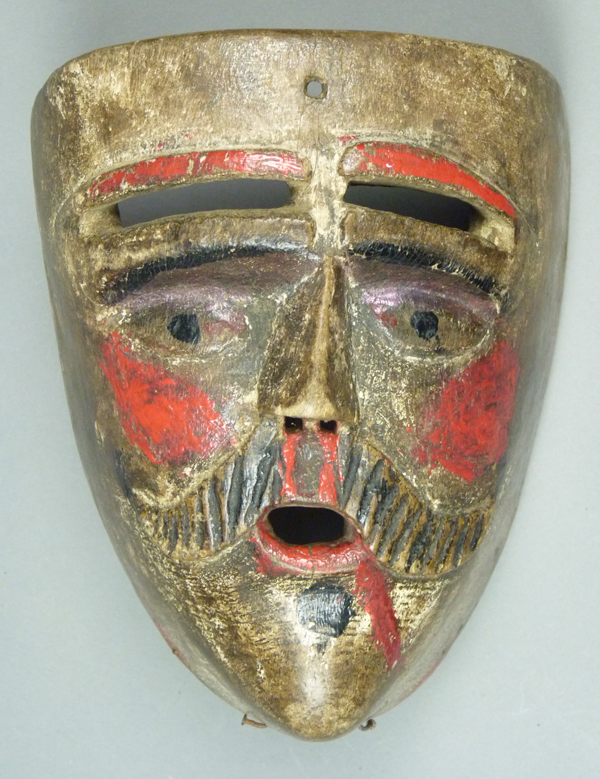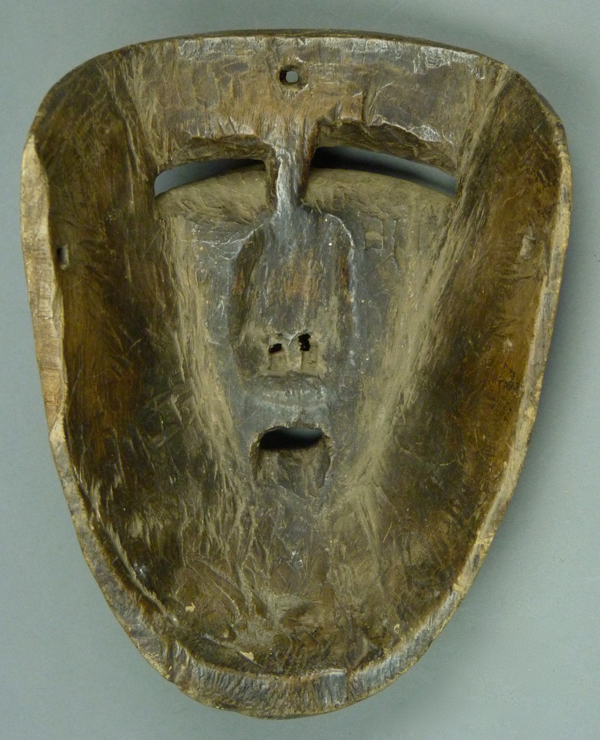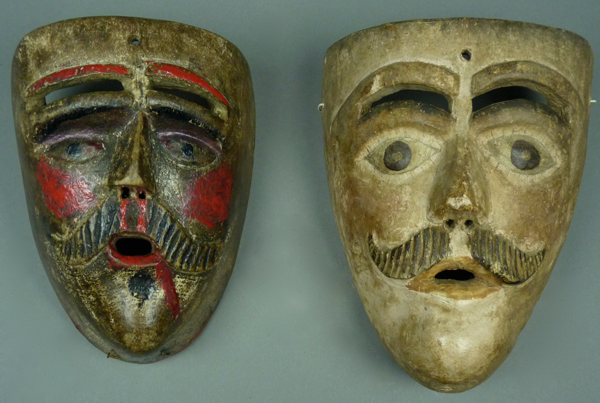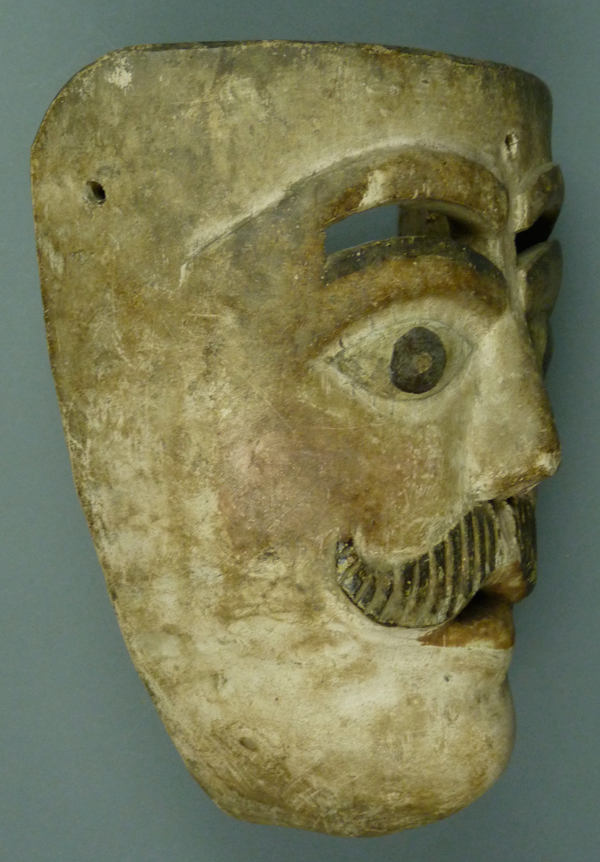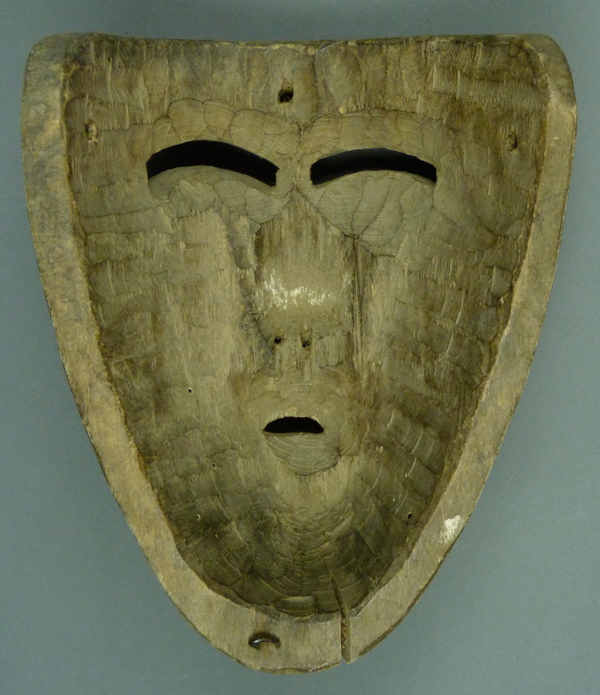This week I am showing another mask that I recently found on EBay™. Like the mask in my opening post, this was another that had a very familiar face. Although I do not know the name of this carver, I do know his hand. That is, I have repeatedly seen masks with this collection of design details, and two of those masks are in the Catálogo (catalogue) of the Moya Rubio Collection, one with a goatee that is identified as a Santiaguero from La Danza de los Santiagueros (Plate 259, page 80), and another that is said to be a Moor from La Danza de los Moros y Cristianos (Plate 262, page 81); the latter closely resembles the EBay mask. Both were said to be from San Pablito Pahuatlán, Puebla. In passing, note that these masks are from a different part of the Mexican state of Puebla than the masks in my book.
The EBay Moor was in some ways different from the mask in my initial post. On the positive side, I was surprised to discover that it was a little smaller than the other masks like this that I had seen. I believe that it is a mask that was made for a child to wear in the dance. On the other hand, the face of this mask turned out to be very darkly stained, causing one to wonder why. One possibility is that the mask was converted from one role to another; maybe the Moor characters are depicted with dark complexions, while the Christians have white faces, or perhaps it was to be used in Carnaval. It is clear that this mask originally had a white face, although most of that paint seems to have worn off. Another possibility is that this mask was deliberately stained, in order to create the impression of greater age. Yet a third possibility is that the mask suffered great neglect, so that exposure to damp conditions might have caused this discoloration, but it lacks a musty odor that would reinforce this idea. Such questions do arise when one is adventurous in the acquisition of Mexican Dance Masks. I would say that this particular mask is not for the beginning collector, nor for the timid, but it does provide a springboard for us to talk about this anonymous carver.
Now I will show some photos of the EBay child’s mask of a Moor.
In this view, one can see hints of the original white paint on the face. There are nails on the chin that would have held some sort of hide or hair for a beard.
The side view. I call your attention to the typical features of this carver, which include a relief carved curving mustache with vertical grooves, relief carved eyes, and broad relief carved eyebrows that contain the vision slits. The mouth designs vary on the masks of this carver.
The back of this mask has a triangular shape, there is a hollow area to accomodate the dancer’s nose, and the lower edges of the vision slits are beveled. The left edge of the rim is broken on this mask. One does see differential staining on this back, with the only unstained areas being in corners and ledges where contact with the dancer’s skin was unlikely.
The EBay mask compared to another mask with the same features that I obtained from Jaled Muyaes in 1997. The difference is size is noticeable.
The side view of my full sized mask reveals the same design details. I think the elevated curved brows that contain vision slits with edges parallel to the brow edges are a distinctive marker.
Here is the back of my full sized mask. I’m sure you can see how similar the two masks are from the back. On the other hand, the patina on the front and back of this mask has a more normal appearance, compared to that on the child’s mask, which is so extreme.
In summary, one of my major goals in this blog is to demonstrate that one can learn to recognize excellent masks.
In next week’s post I will discuss some masks with female faces from the state of Guerrero.

